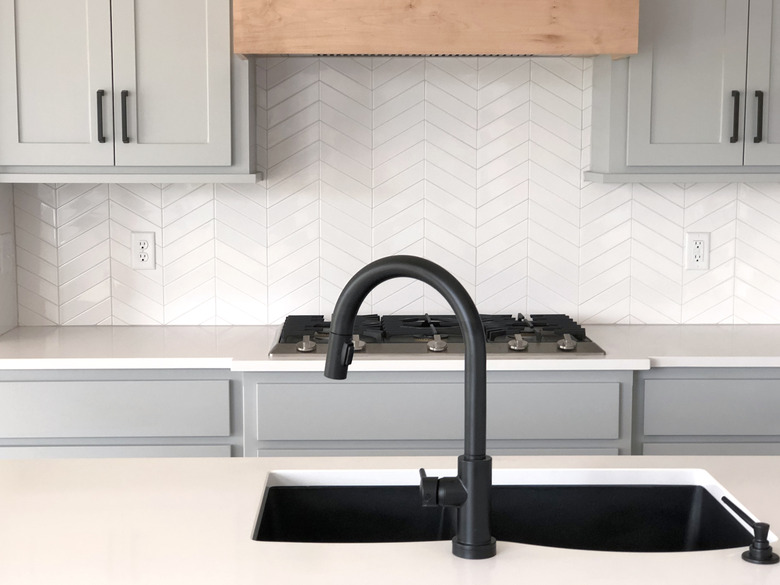How To Drill In Quartz Countertops
We may receive a commission on purchases made from links.
Do-it-yourself projects can save a bundle around the home, and there's a great deal of empowerment and satisfaction that comes from getting a project done on your own. But then there are times when making a mistake can be far more costly than hiring a pro would be, and that's when you've got a judgment call to make. Learning how to drill in quartz countertops can save you money if you get it right, but getting it wrong can shatter that gorgeous countertop.
Use the Right Tools
Use the Right Tools
Unlike some other countertop products, quartz can't be repaired or patched in a cosmetically appealing way. If planning to drill your quartz counter, you'll need confidence, a steady hand and sound knowledge on how to proceed — and you absolutely must have diamond-tipped drill bits for the job, because metal just won't cut it. The heat generated from metal and carbide drill bits can cause the quartz to chip, crack or break. This is a good time to use a cordless drill for one less distraction.
A diamond hole saw bit, for instance, is a great way to go, but remember that you get what you pay for with some of these things. There are far more expensive bits out there, and some home centers rent them, allowing you access to professional-grade bits, which can be safer for this sort of task. Speaking of safety, don't forget your safety glasses for this job.
Prepare to Drill
Prepare to Drill
Prepare your area so the cleanup and distractions are minimal, and you can focus on the task. Put a bucket under the drilling area so it can catch the debris and any water you'll be using to pour on the counter while drilling. You'll need a template for the hole needed, which goes where you plan to drill. If you make a template, remember there will be water poured during this process, so paper and the like will be insufficient. Have a glass or bottle of water handy.
Position Template and Start Drilling
Position Template and Start Drilling
Hold your template in place and position the drill on top. When you start drilling, do so at slow speeds and do not add pressure or push on the drill in any way — let the drill do the work. Pour a little water on the drilled area every 15 or 20 seconds or when you think it's needed to prevent overheating.
Finish the Job
Finish the Job
After you've drilled down by about 1/4 inch, set the drill aside for a moment. Use nonhardening, nonstaining modeling clay to build a little dam around the outside of the hole, about 1/2 inch or so away from the hole. Half-fill this dam with water to keep the drill bit wet while you work.
Carefully replace the drill bit into the established hole and resume drilling slowly. "Pump" the drill by raising and lowering it slightly as you work so as to keep it lubricated, but remember to not apply any pressure at all against the quartz. As you near the end of drilling, slow down even more and reduce pressure as much as possible so the drill bit cleanly cuts through the other side.
Clean and Put Away Tools
Clean and Put Away Tools
With patience and attention to detail, you'll achieve the results you're after while saving a bundle. Use a nonscratching plastic scraper to remove any bits of modeling clay. Clean debris off the drill bit and put your tools away. Now, what's next on your list?
